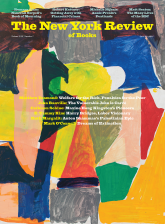To the Editors:
The Athens Review of Books has been preparing an article about the Nazis’ extermination of 44,000 Jews in Thessaloniki, the main city of northern Greece, between 1941 and 1943. The operations were led by Adolf Eichmann’s right-hand man, Alois Brunner (who became known as the “butcher of Thessaloniki”), and Dieter Wisliceny.
In trying to piece together the story of the tragic fate of the Jews of Thessaloniki, we searched the digital archives of Yad Vashem, where we located thirty-six photographs with titles such as Saloniki, Greece, July 1942, Jews Arrested by the Germans, Before Deportation and Saloniki, Greece, “Black Sabbath,” 11/07/1942.* Yad Vashem notes that in a “related collection” there are “555 photographs that were taken by German Military photographers during the war.” All these photos are credited to the Bundesarchiv, Germany’s Federal Archives, and the same is true of the archival material relating to the Jewish community of Ioannina, with titles like The Deportation of the Jews of Ioannina to Larissa, March 1944. From Larissa the Jews Were Deported to Auschwitz. © Bundesarchiv…
Thus, anyone who wishes to reproduce one of these photographs of the Nazi atrocities, whether in print or in digital media, must pay the Bundesarchiv a sum ranging from forty-five to four hundred euros. In other words, the Bundesarchiv has been profiting from the evidence of the Nazis’ crimes against humanity. The pictures that are being sold are not just military photographs from Thessaloniki or Ioannina: the Bundesarchiv profits from selling photos of Nazi crimes throughout Europe. It is worth asking how no one has noticed this already; the only logical explanation I can think of is that this kind of profiteering is inconceivable to most people.
As the most unthinkable crime in the history of humanity, the Holocaust has become a global symbol. Institutions all over the world are working to preserve its memory; it is taught in schools in the West, not least in Germany, which has gone to extreme lengths to shake off the stigma of Nazism. Germany’s efforts preclude, on grounds both logical and ethical, any possibility of profiting from the past it is trying to denounce. A historian who is a descendant of Holocaust survivors told me, “The photo of my parents and uncles being deported, the photo of my mother in the death camp, cannot and should not be used for profit. This should be prohibited.”
I suggest the following:
(1) The Bundesarchiv should not have the legal or moral right to own and copyright archival material from the Holocaust. It should immediately cease all commercial activities relating to it. In fact, it should donate all profits made until now to Yad Vashem.
(2) The Bundesarchiv should give a digital copy of its archive of Nazi crimes to the Imperial War Museum, the Library of Congress, the Bibliothèque nationale de France, the National Library of Israel, and Yad Vashem, for this material belongs to humanity and should be accessible to all.
(3) Only Yad Vashem or some other state institution in Israel has the moral and legal right to charge a symbolic fee for the commercial use of the photographic evidence of the crimes of the Nazis and only in order to cover expenses for archival maintenance and to sponsor educational initiatives to tackle anti-Semitism and racism.
Manolis Vasilakis
Editor in Chief
Athens Review of Books
Athens, Greece
-
*
On Saturday, July 11, 1942, nine thousand Jewish men aged eighteen to forty-five were ordered by the Germans to appear at Eleftherias (Liberty) Square to register for forced labor. The event was appropriately named by the Jews “Black Sabbath.” ↩



